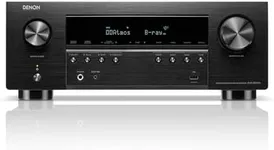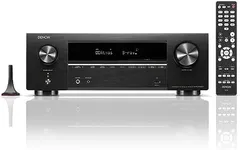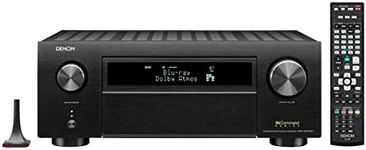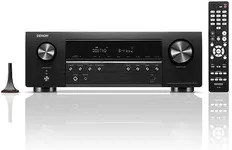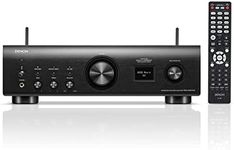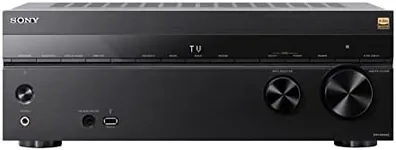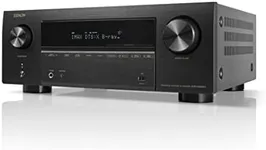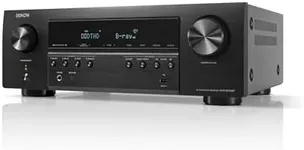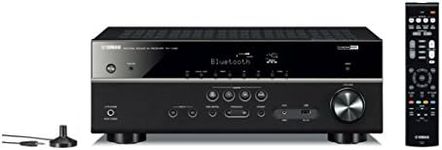Buying Guide for the Best Stereo Receivers
Choosing the right stereo receiver can make a big difference in your home audio experience. A stereo receiver acts as the central hub for your sound system, connecting your speakers, music sources, and sometimes even your TV. When shopping for a stereo receiver, it's important to think about how you'll use it—whether for music, movies, or both—and what devices you want to connect. Understanding the key specifications will help you find a receiver that matches your needs and delivers the sound quality you want.Power Output (Watts per Channel)Power output tells you how much energy the receiver can send to each speaker, usually measured in watts per channel. This is important because it affects how loud and clear your music or movies will sound. Lower power (around 20-50 watts per channel) is fine for small rooms or background listening, while higher power (over 80 watts per channel) is better for larger rooms or if you like to listen at higher volumes. To pick the right power, consider your room size, how loud you want to play your music, and the sensitivity of your speakers.
Number of ChannelsThe number of channels refers to how many speakers the receiver can power at once. A basic stereo receiver has two channels (left and right), which is perfect for music listening. Some receivers offer more channels for surround sound setups, but if you only want to listen to music in stereo, two channels are all you need. Choose based on whether you want a simple two-speaker setup or plan to expand to more speakers in the future.
Inputs and OutputsInputs and outputs are the connections on the back of the receiver for your audio sources (like CD players, turntables, or streaming devices) and your speakers. It's important because you need enough connections for all your devices. Some receivers have digital inputs (like optical or coaxial) for modern devices, while others have analog inputs for older gear. Make a list of what you want to connect and make sure the receiver has the right types and number of ports.
Wireless ConnectivityWireless features like Bluetooth or Wi-Fi let you stream music from your phone, tablet, or computer without cables. This is important if you want the convenience of playing music from streaming services or your personal library. Some receivers also support multi-room audio or voice assistants. If you value easy streaming and modern features, look for receivers with built-in wireless options.
Phono InputA phono input is a special connection for turntables. Not all receivers have this, so it's important if you plan to play vinyl records. If you have a turntable, make sure the receiver has a phono input, or you'll need a separate preamp. If you don't use vinyl, you can ignore this feature.
Speaker Impedance CompatibilitySpeaker impedance, measured in ohms, is a way of describing how much resistance your speakers have. Receivers are designed to work with certain impedance ranges, usually 4, 6, or 8 ohms. This is important because using mismatched equipment can affect sound quality or even damage your receiver. Check your speakers' impedance and make sure the receiver supports it.
Tone Controls and Sound ModesTone controls let you adjust bass, treble, and sometimes midrange to shape the sound to your liking. Some receivers also have preset sound modes for different types of music or movies. These features are important if you like to customize your listening experience. If you prefer a simple setup, you may not need advanced controls, but if you like tweaking your sound, look for receivers with these options.
